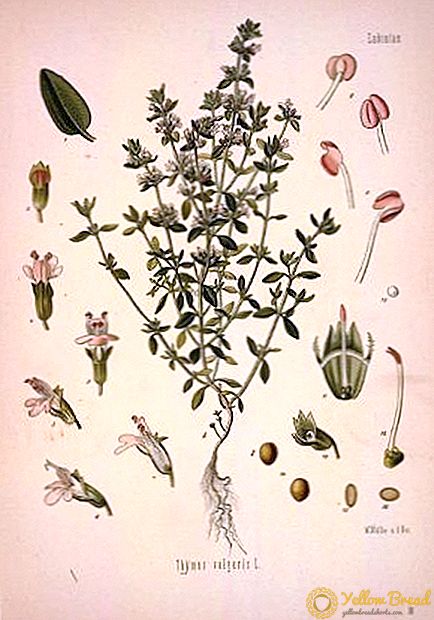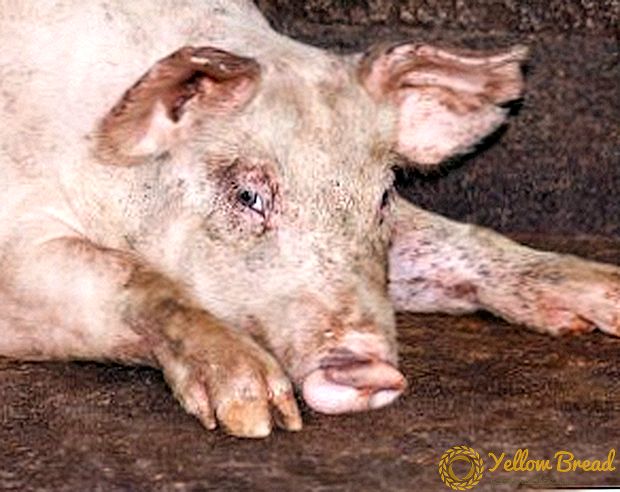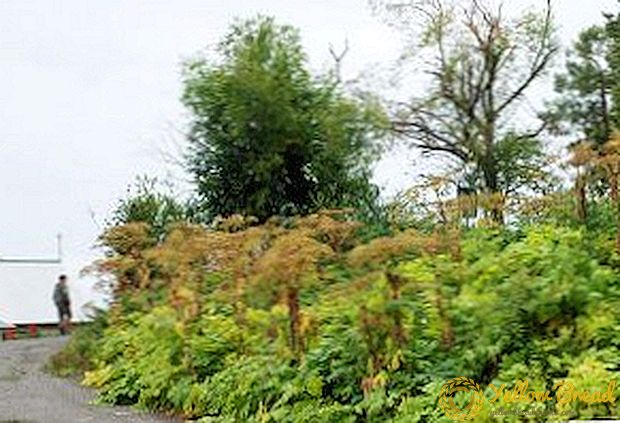
Raspberry is a member of the pink family.
These tasty fruits are known for their taste to any person since childhood.
With a cold, mothers always gave us tea with raspberry jam. Indeed, in raspberries there is a lot of vitamin C, which helps our body to overcome a cold or a viral infection.
In addition to vitamin C, raspberry pulp contains large quantities of organic acids, glucose, fructose, as well as vitamins A and B. Therefore, this plant is very popular among gardeners. In the issue of planting raspberry bushes there is no difficulty.
The main thing is to carefully study the information and avoid elementary mistakes.

There are two ways of planting raspberry bushes - in the pit and in the trench. The choice of the method depends only on you, but planting raspberry bushes in a hole is a less labor-intensive process, but with the trench method, all the roots of the seedling will evenly receive nutrients, which will give an excellent start to the developing root system of the raspberry.
In order to plant bushes in the pits, you must first prepare for each seedling hole 40x50 cm. There must be a distance of at least 1 m between the adjacent pits, and the row spacing must be at least 2 m, otherwise the bushes will be too crowded.
In the case of a trench landing method, a landing site should be prepared in approximately 20-25 days. The trench width should be at least 50-60 cm, and the depth - 40 - 45 cm.
The number of trenches depends on the number of seedlings you purchased. Dripping in this case, the bushes need at a distance of 25 - 35 cm

A place for raspberries should be chosen where the surface is flat or slightly inclined. The slope is better to choose in the northern or north-western part of the site.
You can plant a raspberry and a young side, but it will need to constantly water the bushes.
If in the winter at the place of planting raspberries a little snow falls, then the bushes can lose a large number of fruit points. Therefore, in the place where you plan to plant raspberries, there should not be a draft and strong wind that would take the snow from the site.
In order not to worry about the trellis for the bushes, you can plant raspberry seedlings near the side fence of the plot.
Raspberry bushes are unpretentious to the composition of the soil, but loamy leached chernozem soils, in which there is a lot of humus and enough water, are best for these plants.
Water in the ground should rise no higher than 1.5 m from the surface. If the groundwater does not lie so deeply, the plantation can bear fruit badly, and the plants will die faster than usual.

Land for landing must be prepared. If you plan on planting raspberries in the spring, then you need to prepare the site in the fall, and if you plan to plant the seedlings in the fall, then you need to prepare the site a month before planting.
Preparatory activities consist in deep tillage and fertilizer application. You need to dig up the plot to a depth of at least 30 cm, before making fertilizer.
For raspberries, soil fertility is very important. Bushes will quickly grow and develop in those soils where there is a lot of humus. To do this during the plowing area to bring in or humus with the calculation of 8 - 10 kg per 1 square. meter, or half-dung in the amount of 10-15 kg per unit area.
You also need to make all sorts of composts, for example, peat or composite. Also in the ground to make mineral fertilizers and phosphorus-potassium group.
Superphosphate need to make 50 - 60 g per square. meter, and potassium salts - 30 - 40 g.Be sure to remove all the weeds from the ground, as they can cause damage to raspberry bushes. Pyrei is especially dangerous for these plants.

Raspberry planting time depends on the climatic conditions of the region.
For example, raspberry bushes should not be planted in the middle lane in summeras the plants will be too hot. It is better to prikopat them in late September - early October, or in early spring, when the blooming of the kidneys has not yet taken place.
If you plant the bushes in the fall at the right time, they will have time to settle down before the onset of sustained frost. Therefore, you should calculate the time and prikopat seedlings in about 15 to 20 days before establishing a stable low temperature.
It is better to plant raspberries in autumn, because during this period the air is more humid than usual, and its temperature is quite suitable for the development of raspberries.
If a drought was established in the fall, which is why the land is dry, then it will be better to dig up the bushes in spring. Such a planting option is mandatory for those areas where winter has low rates of natural precipitation, as a result of which the roots may freeze, and then the plant will die altogether.
It is extremely important to choose the right planting material.
As seedlings, it is advisable to use one-year offspring. The roots should be long (15 - 20 cm), should form a thick lobe. Ground runaway thickness should be at least 8 - 10 mm. Before planting, those seedlings that you plan to prikopat need to be shortened to 30 cm in height.

If you do not have enough seedlings, or if you want to multiply a good raspberry variety in a short time, you can use root cuttings.
To do this, it is necessary in the fall while digging out the offspring of raspberries to get out of the ground and the remnants of the roots. Those roots that are 3–5 mm thick should be divided into cuttings 10–15 cm long.
Keep they need until spring in the basementby plunging into wet sand.
In the event that before planting you did not prepare the soil, that is, did not apply fertilizer, then directly into the well or trench you need to demolish the mixture of organic and mineral fertilizers with the calculation of 4-5 kg of humus, 30 g of superphosphate, 20 g of potassium salt.
The root neck should rise slightly above the ground surface. In the hole or trench, the roots should be distributed evenly, slightly compacted and covered with earth.
After each the bush needs to be watered and cover with mulch. Before winter, each bush should be wrapped with an earthen mound of 15–20 cm high.

To care for raspberries need the same methods as for most other shrub plants. Raspberry bushes should be watered regularly, but not flooded.
You also need to remove unnecessary shoots from the bushes, which only increase the load on the plant.
Either straw or peat can be used as mulch, and you need to mulch between rows.
When the plants grow large, they will need to be tied to a trellis or hedge, so that under the weight of the fruit the shoots do not bend too much and do not break. Traditional fertilizers are used as fertilizers, including ashes.
Planting raspberry bushes is very simple, and growing is even easier. If you have once dropped berry bushes, then you will definitely deal with raspberries.






